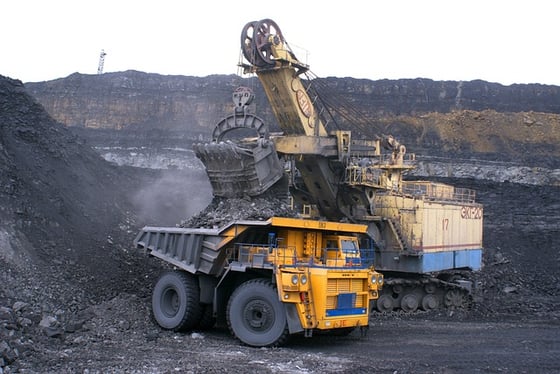- Bitumen's history as a binder and construction material goes back thousands of years.
- This substance is just one of the many end-products of petroleum refining process.
- It is used to bind aggregates to create driveways, roads, and parking lots, as well as for creating roofing felt and sealing flat roofs.
Ever driven on an asphalt parking lot and thought, "What's is this made of?" Or maybe you're in the asphalt business and have dealt with this material day in and day out.
Either way, the hero of our tale is none other than bitumen. But where did it come from, and why's it such a big deal in the construction industry?
Well, let’s dig in, shall we?
Table of Contents
- What is Bitumen?
- Understanding Refined Bitumen
- Bitumen's Role in the Engineering Stage
- Unraveling the Bits and Pieces: Physical Properties and CAS Definitions of Bitumen
- Bitumen vs. Petroleum Pitches: More than Just Black and Sticky!
- Bitumen in Natural and Lake Asphalt
- The Manufacturing Process of Bitumen
- Bitumen's Role in Construction
- Advancements and Innovations in Bitumen Technology
- Sustainability and Recycling of Bitumen
- Frequently Asked Questions About Bitumen
What is Bitumen?
https://elements.envato.com/the-man-working-asphalt-pouring-tar-for-road-repai-TKMZQTG
Bitumen's history reaches back several millennia. Ancient people, such as the Sumerians and the Elamites, used it for a myriad of purposes. This includes sticking bricks together and waterproofing their boats. Fast forward to today, and it’s one of the key ingredients that keep our roads smooth and our cities connected.
Essentially, bitumen is a semi-solid form of petroleum, thick and heavy, with an almost molasses-like consistency.
Now, while it’s been around for eons, its significance in today’s world is immeasurable, especially in the construction and petroleum industries.
Think about it. Roads, highways, parking lots, airport runways – they all rely on this ancient material, modernly refined, to give us that dependable surface we often take for granted.
Understanding Refined Bitumen
Just like fine wine is to grapes, refined bitumen is the sophisticated version of its ancestor. But how does it go from being just another component in crude oil to becoming the superhero of the construction world?
The Transformation of Crude
Imagine crude oil as a big, mixed pot of various hydrocarbon compounds – some light, some heavy, some just right.
When it's time to refine this pot, the goal is to sort and separate. And here's where the magic (or, let's say, science) happens.
During refining, crude oil is subjected to a process called distillation. Picture a high-tech kitchen where a chef (in this case, the refinery) heats our pot of crude.
As it heats, the lighter fractions, like gasoline and diesel, evaporate and rise, only to be captured and condensed into their respective liquid forms.
This process continues, each time with heavier fractions evaporating until we're left with the heaviest of them all – our star, bitumen.
Bitumen's Role in the Engineering Stage
So now that we have our refined bitumen, what makes it so sought after in engineering?
The answer is simple: it's all about its binding properties and durability. This thick, sticky substance acts like glue, binding aggregates (like stones and sand) to form what we call asphalt concrete.
This mix is not just robust. It's also flexible, making it ideal for roads that need to endure heavy traffic, adverse weather, and the tests of time.
Related: 8 Things You Need to Know About Alligator Cracking
Unraveling the Bits and Pieces: Physical Properties and CAS Definitions of Bitumen
You might be thinking, "Alright, I get it, bitumen is cool. But what makes it special?" Well, grab your scientist goggles, and let’s take a closer dive into the nitty-gritty of bitumen.
Physical Characteristics of Bitumen
Bitumen is dense, sticky, and black or dark brown. When cold, it's pretty solid, but heat it, and it becomes a viscous liquid.
Unlike other materials that get weaker with heat, bitumen gets more fluid, making it perfect for molding and shaping – a dream for those building our roads.
The CAS Story
Every significant substance has its unique identifier, kind of like a fingerprint. For chemicals, this is the CAS (Chemical Abstracts Service) number.
'Straight run' bitumen, which is directly distilled from crude oil, carries a CAS number of 8052-42-4.
On the flip side, when air is bubbled through bitumen at high temps, we get 'oxidized bitumen', a slightly different character with a CAS number of 64742-93-4.
These numbers may look like just a sequence of digits, but in the world of science, they’re as unique as a signature.
Bitumen vs. Coal Cousins
 Mining coal Image by Анатолий Стафичук from Pixabay
Mining coal Image by Анатолий Стафичук from Pixabay
Now, here's a point of confusion for many. Bitumen is often mixed up with its coal-derived relatives, coal tar, and coal tar pitches. While they may look similar – dense, black, and used in industry – their origin stories are quite different.
Bitumen is a child of petroleum, formed from ancient organic materials under the earth's pressure.
Coal tar, on the other hand, is a byproduct of coal processing. It's like comparing apples to oranges – or maybe more aptly, petroleum to coal.
While both have their roles in the industry, it's crucial to keep their identities distinct.
Bitumen vs. Petroleum Pitches: More than Just Black and Sticky!
You might think all black, gooey substances are created equal. But when it comes to the intricate world of construction and industry materials, there's more than meets the eye.
Enter our two contenders: Bitumen and Petroleum Pitches. They may seem like distant cousins, but let's set the record straight on how they differ.
Where They Come From
Bitumen, as we know, is the dark knight of the petroleum world. It originates from the heavy fractions left behind after lighter compounds have been distilled away from crude oil.
Simple, right? Now, petroleum pitches have a more dramatic origin tale. They come to life when petroleum fractions undergo intense processes, like thermal cracking (breaking down large molecules with heat), coking (heating in the absence of air), or oxidation (exposing to air under specific conditions). These processes give pitches their distinct characteristics.
Composition
At the molecular level, these two are like apples and pears. Bitumen is primarily hydrocarbons with some sulfur, nitrogen, oxygen, and metals.
Petroleum pitches, on the other hand, have a more complex mix due to their birth processes. They contain larger aromatic (ring-like) hydrocarbons and fewer saturates, giving them unique chemical resilience.
Physical Face-off
Touch a bitumen, and it's sticky and semi-solid. Its viscosity changes with temperature.
Petroleum pitches? They're even more dense and less reactive. When you heat them, they're less likely to turn liquid compared to bitumen. And when you expose them to the elements, they show off their robust nature by being more resistant to weathering.
Performance on the Ground
In the real world, these differences play out in how they're used. While both are champions in road construction, their roles vary. Bitumen is the superstar for binding and making flexible roads. Petroleum pitches, due to their resilience, often find themselves in specialty applications where extra toughness is required, like in some industrial coatings or as a precursor to producing certain carbon materials.
Related: How to Patch Asphalt: 7 Important Tips
Bitumen in Natural and Lake Asphalt
In the grand mosaic of asphalt materials, bitumen shines as a key piece, but it isn't the only star. Let's venture beyond the realms of refined bitumen and delve into its more raw, natural counterparts: Trinidad Lake Asphalt, Gilsonite, and rock asphalt. While they share familial ties, their characteristics and applications set them apart.
Refined Bitumen
Think of refined bitumen as the cultured sibling in the asphalt family. It has undergone processes, been purified, and tweaked to achieve specific properties ideal for modern construction. It's like taking raw talent and honing it to perfection.
The Natural Wonders
Trinidad Lake Asphalt
Now, here's an exotic member of the family. Sourced from the famous Pitch Lake in Trinidad, this asphalt is a mix of water, bitumen, and mineral matter.
It's famed for its unique elastic properties, and while it contains bitumen, it's in its most natural state, with a rich mineral content giving it distinct characteristics.
Gilsonite
Extracted from the deep mines of Utah, Gilsonite is a naturally occurring solid hydrocarbon. Unlike the versatile bitumen, gilsonite boasts specific applications like ink formulations, paints, and stains due to its unique solubility and hardness.
Rock Asphalt
As the name suggests, this is asphalt that’s naturally embedded in limestone or sandstone rocks. Think of it as nature's own composite material where the rock provides strength and the embedded bitumen offers binding and waterproofing.
The Heat Challenge
One fascinating aspect of these natural wonders is their behavior when subjected to heat. Unlike refined bitumen that smoothly transitions to a liquid state, natural asphalts tend to lose mass when heated.
This is due to the volatile components they contain. Moreover, the higher mineral content in products like Trinidad Lake Asphalt means that when they're used, they impart different textures and finishes compared to their refined cousin.
The Manufacturing Process of Bitumen
Bitumen's Journey: From Deep Earth Secrets to Refined Excellence
https://elements.envato.com/petrochemical-storage-tank-with-oil-refinery-backg-77LN7G2
Every product has a story, a behind-the-scenes narrative of how it came to be. For bitumen, this tale begins deep within the Earth, in places untouched by light for millions of years. Let's trace back its journey, from its geological birthplace to the black gold we know today.
A Geological Ballet
Imagine a world millions of years ago where aquatic plants and microorganisms thrived and then met their eventual end.
As they settled at the bottoms of ancient seas, lakes, or riverbeds, layer upon layer of sediments blanketed them.
Over time, the combined forces of Earth's shifting tectonics and gravity compressed these layers, creating immense heat and pressure.
Under these intense conditions, the organic material began a transformation dance. The heat broke down their complex structures, and the pressure cooked them, gradually converting these organisms into a waxy substance called kerogen.
As temperatures rose even higher, the kerogen went through another metamorphosis, breaking down into hydrocarbons - the elementary building blocks of crude oil.
Related: 6 Reasons to Start a Driveway Sealing Business
Nature's Treasure Chests
But how does this liquid gold stay hidden for us to discover later?
The answer lies in Earth's rocky layers. As these hydrocarbons started to move upwards, lured by their lighter density compared to the surrounding water, they often found barriers in the form of non-porous rock formations, like clay or shale.
However, not all rocks were barriers; some were welcoming hosts. Porous rocks, such as sandstone or limestone, provided the perfect refuge.
These rocks, with their myriad of tiny pores, allowed the hydrocarbons to settle and accumulate. And just like that, vast reservoirs of oil and gas came into existence, ensconced within the Earth's crust, waiting for the day they'd be tapped.
Bitumen's Final Act
When we extract crude oil from these reservoirs, bitumen's journey is not yet complete. Through refining processes, where crude oil is distilled, bitumen emerges as the thickest, heaviest fraction, ready to pave our roads and shape our infrastructures.
Bitumen's Role in Construction
Road Surfacing
The vast majority of bitumen is used in road construction, where it serves as a binder mixed with aggregate particles to create asphalt concrete. Its adhesive and cohesive properties provide a durable and water-resistant surface, making it an ideal material for road construction.
Durability. Bitumen has excellent durability, which is essential for withstanding the pressure exerted by heavy vehicles passing over the surface repeatedly.
Water Resistance. It is water-resistant, which prevents water from seeping into the underlying layers of the road, thereby maintaining its structural integrity.
Flexibility. Unlike concrete, bitumen has a certain degree of flexibility. This allows the road surface to adapt to temperature variations and slight settlements without cracking.
Roofing
https://elements.envato.com/worker-laying-the-vapor-barrier-for-the-roof-bitum-SE7QQQ3
Bitumen is also extensively used in the roofing industry, and about 10% of the bitumen used worldwide is used in roofing applications. It is mainly used for making roofing felt and for sealing flat roofs.
Waterproofing. Bitumen forms an excellent waterproofing layer on the roof, preventing water from entering the building.
Adhesiveness. Its adhesive properties help bind the roofing materials together, making the roof sturdy and durable.
Temperature Resistance. It can withstand extreme temperatures, making it suitable for regions with varying climatic conditions.
Advancements and Innovations in Bitumen Technology
Bitumen has been used for centuries in various applications. But with the advancement of technology, there have been several innovations that have revolutionized its use, particularly in road construction.
Two of the most significant advancements in bitumen technology are Polymer Modified Bitumen (PMB) and Warm Mix Asphalt (WMA).
Polymer Modified Bitumen (PMB)
PMB is a specially engineered bitumen that contains polymers, usually styrene-butadiene-styrene (SBS) or ethylene-vinyl acetate (EVA), which are mixed with the traditional bitumen.
This modification results in a material that has superior properties compared to conventional bitumen.
Enhanced Performance. The addition of polymers improves the elasticity, resistance to rutting, and fatigue resistance of the bitumen.
This makes it particularly suitable for use in high-stress areas such as intersections, bus lanes, and airport runways.
Temperature Resistance. PMB can withstand higher temperatures, making it suitable for use in hot climates, and has a better resistance to low-temperature cracking, making it suitable for cold climates as well.
Longevity. Roads constructed with PMB have a longer lifespan and require less maintenance compared to those constructed with traditional bitumen.
Related: Making the Switch from Coal Tar to Asphalt Emulsion Sealer
Warm Mix Asphalt (WMA)
WMA is a relatively new technology that allows the production and placement of asphalt mix at lower temperatures compared to traditional Hot Mix Asphalt (HMA). This is achieved by adding additives or using special techniques that reduce the viscosity of the asphalt binder.
Environmental Benefits. Lower production temperatures lead to a reduction in energy consumption and emissions of greenhouse gases and volatile organic compounds. This makes WMA a more environmentally friendly option compared to HMA.
Workability. As WMA can be produced and placed at lower temperatures, it extends the paving season and allows for longer haul distances, giving more flexibility in construction scheduling.
Improved Compaction. Lower mix temperatures result in less aging of the binder during the manufacturing and construction process, leading to better long-term performance of the pavement.
These advancements and innovations in bitumen technology have greatly enhanced the performance of asphalt pavements, reduced their environmental impact, and contributed to more sustainable construction practices.
With continuous research and development in this field, we can expect even more innovative solutions in the future that will further revolutionize the use of bitumen in construction.
Sustainability and Recycling of Bitumen
In an era where sustainability is paramount, the bitumen industry is faced with significant challenges, particularly concerning environmental impact and waste reduction. The production and application of bitumen involve high energy consumption and the emission of greenhouse gases.
Additionally, the extensive use of non-renewable natural resources contributes to the depletion of these resources. However, efforts have been made to address these challenges, and the recycling of reclaimed asphalt pavement (RAP) and reclaimed asphalt shingles (RAS) are two key strategies that are helping to make the bitumen industry more sustainable.
https://elements.envato.com/construction-machine-jackhammer-breaking-asphalt-o-9Y572N9
Recycling of Reclaimed Asphalt Pavement (RAP)
RAP is the material that is obtained by removing and crushing existing asphalt pavement. This material can be incorporated into new asphalt mixtures, thereby reducing the need for new bitumen and aggregates.
Reduction in Material Costs. The use of RAP reduces the need for new materials, thereby reducing the overall cost of the asphalt mix.
Energy Savings. Incorporating RAP into new asphalt mixtures reduces the energy required for the production of new bitumen and aggregates.
Reduction in Landfill Waste. By recycling the existing asphalt pavement, the amount of construction waste that ends up in landfills is significantly reduced.
Recycling of Reclaimed Asphalt Shingles (RAS)
RAS consists of waste asphalt shingles from roofing applications. These shingles can be ground and incorporated into new asphalt mixtures for road construction.
Improved Performance. The addition of RAS into new asphalt mixtures can improve the performance of the pavement by increasing its resistance to rutting and cracking.
Reduction in Material Costs. Similar to RAP, the use of RAS reduces the need for new materials, thereby reducing the overall cost of the asphalt mix.
Reduction in Landfill Waste. The recycling of asphalt shingles reduces the amount of roofing waste that ends up in landfills.
Despite the obvious benefits of recycling RAP and RAS, there are challenges associated with their use. For example, there are limitations on the percentage of RAP and RAS that can be incorporated into new asphalt mixtures to ensure that the performance of the pavement is not compromised.
Additionally, the processing of RAP and RAS requires specialized equipment and may not be feasible for all construction projects.
Frequently Asked Questions About Bitumen
What is bitumen? How is it different from asphalt or tar?
Bitumen is a sticky, black, and highly viscous liquid or semi-solid form of petroleum. It is often confused with asphalt and tar, but they are different materials.
Asphalt is a mixture of bitumen and aggregates (stone, sand, gravel), whereas tar is a thick, dark liquid derived from the distillation of coal. Bitumen is a natural material, whereas tar is man-made.
How is bitumen produced, and what is its primary source?
Bitumen can be found in natural deposits. But most of the bitumen used today is produced from the fractional distillation of crude oil.
It is the heaviest fraction obtained from the distillation process and requires additional processing to meet the specifications required for its use in construction.
What are the main applications of bitumen in the construction industry?
The main applications of bitumen in the construction industry are road surfacing and roofing. It is used as a binder mixed with aggregate particles to create asphalt concrete for road construction and as a waterproofing layer in roofing applications.
Is bitumen an environmentally friendly material, and are there sustainable alternatives?
Bitumen production and application involve high energy consumption and the emission of greenhouse gases. However, efforts are being made to make its use more sustainable by recycling reclaimed asphalt pavement and shingles, and by using warm mix asphalt technology.
There are also alternative materials such as bio-asphalt, made from bio-based materials. But they are not yet widely used due to cost and performance limitations.
What are the key physical properties of bitumen that make it suitable for road surfacing and roofing?
The key physical properties of bitumen that make it suitable for road surfacing and roofing are its durability, water resistance, adhesiveness, flexibility, and temperature resistance.
These properties make it ideal for creating a durable and water-resistant surface for roads and roofs.
Can bitumen be recycled or reused, and what are the benefits of using recycled bitumen?
Yes, bitumen can be recycled or reused. Reclaimed asphalt pavement (RAP) and reclaimed asphalt shingles (RAS) can be incorporated into new asphalt mixtures.
The benefits of using recycled bitumen include a reduction in material costs, energy consumption, and landfill waste, and improved performance of the pavement.
Conclusion:
Bitumen has proven time and time again that it is one of the most useful and versatile construction materials on the planet. If you want to know more about asphalt, then check out the Asphalt Kingdom blog.
Interested in learning how to maintain and fix asphalt pavements? Take a look at our downloadable guides! From adding line striping to your existing business to contractor standard operating procedures, we've got it all. Download them now!




